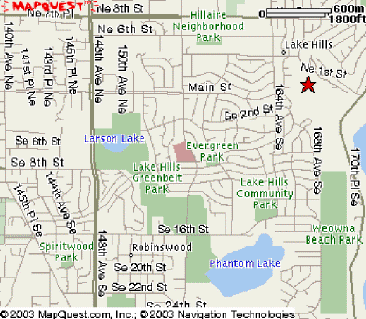

The roofing industry is a selective and secretive business. They don't want to repair roofs they just want throwaway roofs. They will tell you that you need a new roof which is a huge investment for most of us. It does therefore seem wise to know a few facts about roofs because it is a substantial investment.
We have a gravel tar roof, probably one of the greatest but hard to maintain especially with shade trees around. This type of roof consists of around a half inch of smooth rock pebbles on top of a tar soaked felt base. The gravel is there to protect it from UV sunlight and heat. Our house was built in 1958 and the roof was replaced in 1980. The present one is old but still healthy. As with many of the houses in our area each design was alternated between a steeper roof with sufficient run for shingles and a shallow roof that consists of a tar surface and pebble gravel cover. I think the idea was to have lots of variety in the neighborhood. All the houses look different. They are designed to look different. They have lots of veriety.
I have laid only one roof in my life and it is my firm conviction that once in a lifetime is enough for anybody. It's very hard work regardless of the type of roof. The advantage of a low run tar pebble roof is that there are no seams. Ultraviolet sunlight can damage the tar in just a few years and make it brittle so a layer of pebbles or rocks is absolutely needed to cover the roof to protect it. Water easily drains through the rocks. Asphalt shingles have UV protection too, a layer of sand imbedded on the surface of the shingle that offers limited UV protection but it's not very much protection as far as I can see. Composition shingles also collect moss which is stubborn to remove. After 20 years of sunlight shingle roofs are far gone and easily leak and become very brittle. When you weight the advantages of one kind of roof against another it depends on the roof run, that is, how steep the roof is and houses don't really give you much of a choice. The house is designed for one kind of roof so you use either shingles or tar gravel. If your house is real expensive, it is built with an adobe or brick tile roof that never wears out.
In other places roofs are made to last forever but America loves to make 20 year roofs because it generates business for roofers. But roof replacement is always an expensive thing. I have so far successfully repaired about 5 leaks in my house with minimum damage to the interior and minimum cost to me. It just takes patience, investigation, work, roof repair tar, sheet rock, mud and paint. Surprisingly there seams to be little useful knowledge around about roofs, just advertisement, but before I make any suggestions, here's what people do say about tar gravel roofs. Contractors want to sell you something they say is better but way more expensive. Roofers try to talk you into buying membrane or aluminum roofs which are extremely expensive and probably last no longer than a traditional style tar roof.

Good Points about gravel/tar roofs as I see it anyway.
1. There are no seams or
overlap. It is one continuous roof.
2. Shingles can't blow off. Tar roofs have no shingles and no nails.
3. Valleys and ridges don't tend to leak as much.
4. You won't have dormers on a shallow roof.
4. Breather pipes and vents can be added more easily.
5. It is much easier to find a leak and patch a tar roof than replace shingles.
6. Often there are no gutters.
Bad Points about tar roofs (what roofers say everywhere when they want to talk you into something expensive).
1. Pebbles get hot.
But any roof gets hot.
2. Inefficient. It depends on insulation under the roof,
not the roof itself.
3. Heavy. No more so than any roof other type roof. Shingle houses can
carry 4 layers of shingles.
4. Traps moisture. Not if you keep your gravel roof clean of
debris and moss.
5. Unstable. It could be if the roof slope is too great.
Then the gravel pebbles can move and plug drains. Pebbles will not move if the roof is kept
clean. The water just washes right through. But the pebbles
could shift.
6. Difficult to service. This is very true. Every 5 to
10 years it is absolutely necessary to clean the debris out from the
gravel. If
you have trees you will get lots of debris. The gravel becomes
very fertile and can grow anything. You also have to spray for
moss a lot, like every year or so. Same with any roof. even
if you do spray for moss you will get debris which becomes moss.
7. Tar roofs develop wrinkles over time, just like us. Don't
walk on the wrinkles. Cover them with gravel. Make sure it's
smooth pebble gravel. When you walk on the roof stay on the
eaves. Walk flat-footed. Tread lightly. No vollyball.
A little history:
 Back around 1954 Lake Hills was
incorporated into Bellevue or something like that. Most of the area
was just logged off hills. Several
ambitious contractors decided to develop the East Lake Hills area, a
terrain which
because of its many hills and rocky features was perhaps unsuitable for suburban development. East Lake Hills was the area
lying between NE 8th and SE 16th. and bounded on the east and west by 148th and
164th. The roads that the city engineers constructed
attempted to follow the terrain
and consisted of a confusing collection of cul-de-sacs, wiggly roads, dead ends, and
roads that often ran back into and onto themselves. Our street is
157th which likes to disappear and then suddenly reappear. It even changes name five houses up from us.
Back around 1954 Lake Hills was
incorporated into Bellevue or something like that. Most of the area
was just logged off hills. Several
ambitious contractors decided to develop the East Lake Hills area, a
terrain which
because of its many hills and rocky features was perhaps unsuitable for suburban development. East Lake Hills was the area
lying between NE 8th and SE 16th. and bounded on the east and west by 148th and
164th. The roads that the city engineers constructed
attempted to follow the terrain
and consisted of a confusing collection of cul-de-sacs, wiggly roads, dead ends, and
roads that often ran back into and onto themselves. Our street is
157th which likes to disappear and then suddenly reappear. It even changes name five houses up from us.
Out of this hodgepodge came some pretty well built structures. The houses had sometimes similar floor plans but of course after 50 years many of these houses had morphed into different styles, shapes, landscapes, and colors. One thing that had not changed were the roofs. They alternate between almost flat to enough to support shingles. You can go for miles and the roofs alternate between flat and pitched.

I did our house many years ago when we first bought the house and I retired so I had time to do stuff that you usually ignore.
Our roof used to look like a forest floor because moss grows so rampant on pebble roofs and we had lots of shade trees. The biggest enemy to a gravel roof is moss. Moss eventually destroys a roof by retaining moisture and restricting air circulation and water flow. The moss roots eventually work themselves into the roof fabric. The weight of wet moss on a roof is immense.

Our roof had a lot of moss because previous owners had never taken care of it. I began developing a way to remove the moss. First I removed the surface moss and then get rid of all the roots that had worked into the pea gravel. The gravel has to be able to pass water. Any gravel roof will accumulate moss and debris if there are any trees around. Everybody likes trees for shade and beauty. Nobody wants to clean a roof.
I selected an area of about 10x10 feet and carefully raked off surface moss collecting it into barrels which got dumped over into the back yard. I began moving the gravel around with my big blower. In this way I hoped the debris would blow away leaving the gravel. Most of the time it worked fine. Afterwards I would carefully redistribute the gravel over uneven spots.
When I was done I had a huge pile of moss about 4 feet high in the back yard. There was a lot more moss scattered all over the back and front yard and street.
Here is the finished roof looking west.
I then sprayed the roof heavily with moss killer.
Nothing can prevent moss. It will come back. You have to get rid of the debris that accumulates on the roof because it will become moss again and block the free flow of water.